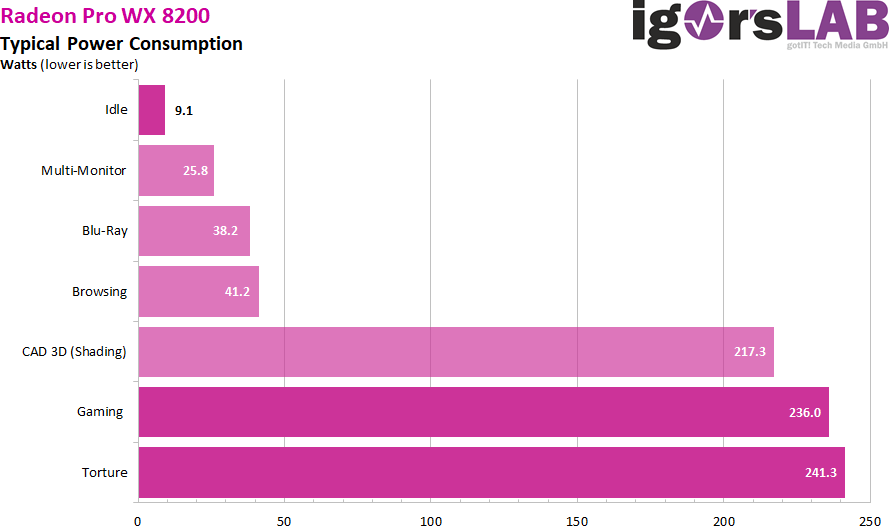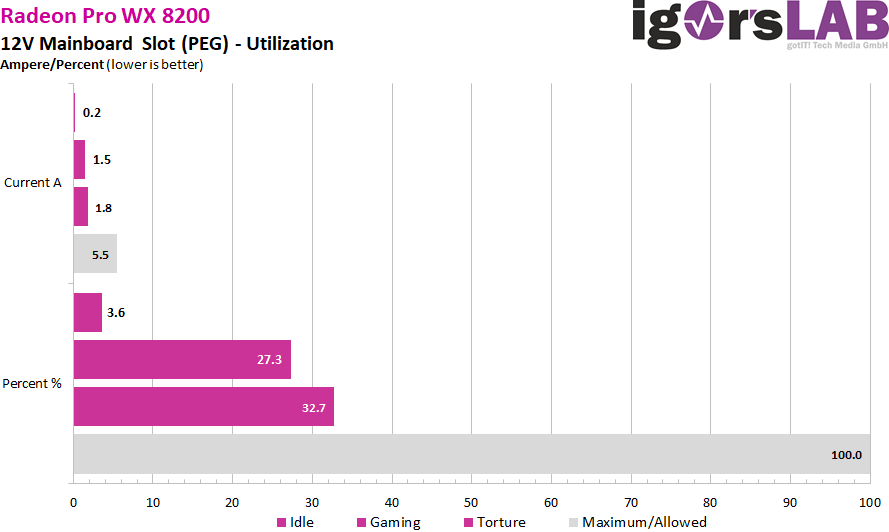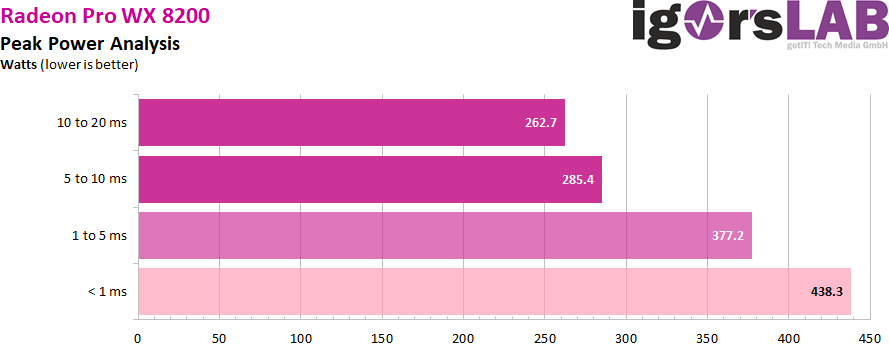Power consumption and loads
The power consumption of this card is pleasantly low with 9.1 watts in the idle. With the 3D-Loop, this card with 236 watts is only slightly above the specified board power and in the Torture-Loop with approx. 241 watts also not sensationally above the power limit specified in the BIOS. Unfortunately, overclocking does not work with the workstation card, which also applies to the underclocking. A BIOS, full ballet. On the other hand, a savings switch, as with the consumer cards, is searched in vain.

Here is also a short excerpt from what AMD has given this card in the firmware of limits. Manual sub-voltage is unfortunately not possible, although the average tensions were not so alarmingly high.
The load distribution on the rails is good, because the maximum 5.5 amperes of the motherboard slot are never exceeded. The main load of approx. 70% always carry the two external 12V connections of the card.

Power supply design and peak loads/currents
As I have already demonstrated in detail in my basic article "The fight of graphics card against power supply – power consumption and load peaks demystified", there are also temporarily higher loads in the millisecond range, which are unfavorable in case of unfavorable designed or improperly equipped power supplies can already lead to unexplained shutdowns. The TBP (Typical Board Power) measured by the graphics card manufacturer or the reviewers does not really help for a stable design of the system.

Peaks with intervals between 1 and 10 ms can lead to shutdowns with very fast-reacting protective circuits (OPP, OCP), especially for multi-rail power supplies, although the average power consumption is still in the norm.
For the Radeon Pro WX 8200 I would therefore be able to use approx. calculate 300 to 350 watts to have enough reserves in case of cases. A short excerpt with high resolution now show us the 20 ms intervals, how I run them automatically for valuation:
Detailed recording of average power consumption and flowing currents
As usual, I now also set aside the power consumption and the flowing currents as detailed graphics of my oscillograph measurements. A service that hardly anyone else offers and which shows how the maps "tick" in detail:










































Kommentieren